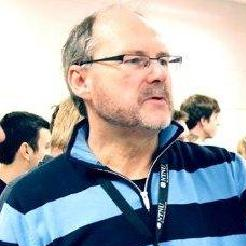Modelling, Simulation and Optimization of Large Scale Chemical Processes
A special issue of ChemEngineering (ISSN 2305-7084).
Deadline for manuscript submissions: closed (21 August 2019) | Viewed by 6553
Special Issue Editor
Interests: process modelling; simulation, optimization; model predictive control and conceptual design of chemical processes (process technologies); statistical analysis of data, including model regression and design of experiments; processes like gas-to-liquid and biomass-to-liquid process systems; Fischer-Tropsch synthesis; methanol synthesis; methanation; synthesis gas production; membrane processes; polyolefin processes
Special Issue Information
Dear Colleagues,
We are inviting submissions to a Special Issue of the journal ChemEngineering, “Modelling, Simulation and Optimization of Large Scale Chemical Processes”. We are particular interested in efficient and robust techniques and algorithms for simulation and optimization of large scale models describing chemical engineering systems. By “large scale models” we mean detailed models of unit operations combined into a flowsheet model of an entire process. The models may be steady-state or dynamic. Commercial process simulator models represent a large scale model, but also tailor made models implemented in commercial simulators or as standalone programs. A detailed model may be high resolution with respect to describing spatial gradient, but also with respect to distribution of chemical components and other population distributions. In addition, underlying thermodynamic models for calculation of phase and chemical equilibria and physical properties add to the complexity. These models are computationally laborious, and we are interested in efficient and robust methods to use these models in a simulation and/or optimization contexts. In a dynamic simulation context the use of local thermodynamic models has been successfully applied. Similarly, in an optimization context the use of surrogate models has been applied to make the optimization more efficient and robust. To ensure a global optimum is of great interest as well as efficiency. New algorithms and techniques are of great interest, in addition to good and illustrative applications of new and existing techniques.
Prof. Magne Hillestad
Guest Editor
Manuscript Submission Information
Manuscripts should be submitted online at www.mdpi.com by registering and logging in to this website. Once you are registered, click here to go to the submission form. Manuscripts can be submitted until the deadline. All submissions that pass pre-check are peer-reviewed. Accepted papers will be published continuously in the journal (as soon as accepted) and will be listed together on the special issue website. Research articles, review articles as well as short communications are invited. For planned papers, a title and short abstract (about 100 words) can be sent to the Editorial Office for announcement on this website.
Submitted manuscripts should not have been published previously, nor be under consideration for publication elsewhere (except conference proceedings papers). All manuscripts are thoroughly refereed through a single-blind peer-review process. A guide for authors and other relevant information for submission of manuscripts is available on the Instructions for Authors page. ChemEngineering is an international peer-reviewed open access semimonthly journal published by MDPI.
Please visit the Instructions for Authors page before submitting a manuscript. The Article Processing Charge (APC) for publication in this open access journal is 1600 CHF (Swiss Francs). Submitted papers should be well formatted and use good English. Authors may use MDPI's English editing service prior to publication or during author revisions.
Keywords
- Large scale models
- efficient and robust methods
- optimization
- process simulation
Benefits of Publishing in a Special Issue
- Ease of navigation: Grouping papers by topic helps scholars navigate broad scope journals more efficiently.
- Greater discoverability: Special Issues support the reach and impact of scientific research. Articles in Special Issues are more discoverable and cited more frequently.
- Expansion of research network: Special Issues facilitate connections among authors, fostering scientific collaborations.
- External promotion: Articles in Special Issues are often promoted through the journal's social media, increasing their visibility.
- Reprint: MDPI Books provides the opportunity to republish successful Special Issues in book format, both online and in print.
Further information on MDPI's Special Issue policies can be found here.





